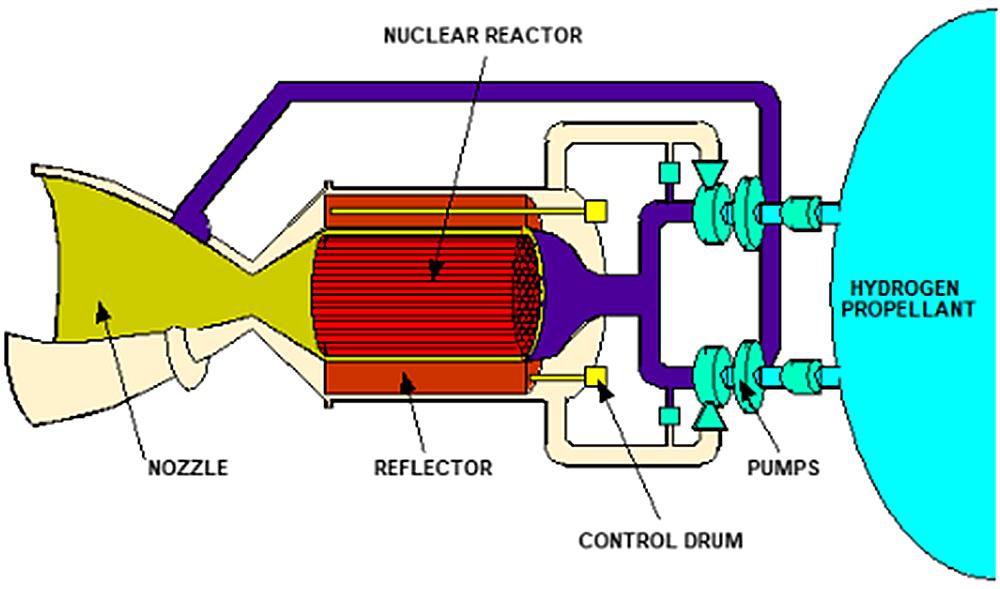Components of a Nuclear Thermal Propulsion System

Hydrogen Propellant Tanks
Hydrogen is stored at cryogenic temperatures (20 K) to maintain the propellant in a liquid state by Cryogenic Fluid Management Systems.
Propellant Delivery Feed System
Includes plumbing, valves, filters, and fluid management devices needed to ensure the propellant is adequately delivered to the reactor at the right conditions. The Turbopump includes turbomachinery/pumps needed to help push and condition the propellant from the propellant tanks to the reactor. These components fall under the broad category of propellant feed system.
Reactor
Fuel Assembly
The fuel assembly for current designs contain the flow tubes for hydrogen, as well as the “fuel matrix” (such as ceramic-metallic or ceramic-ceramic matrix-based Uranium-Nitride (UN) or Uranium-Carbide (UC) fuels), fuel cladding, and insulator.
Moderator Assembly
The moderator assembly contains elements (such as ZrH or BeO) to moderate or slow down neutrons to achieve the appropriate neutron energies/velocities for nuclear fission.
Control Rod/Drum Assembly
In order to maintain the nuclear fission chain reaction, control rods/drums in the reactor (such as B4C) are used as neutron poison (or neutron absorbers) to control or often decrease reactivity in order to maintain criticality and sustain the nuclear fission process. The assembly also allows for rotation of these control drums to adjust the amount of neutron poison on demand.
Reflector
To minimize neutron leakage, a material is placed at the outer radius of the reactor (such as Be), to reflect or “scatter” neutrons back into the core that would otherwise escape. The reflected neutrons can then cause more fissions and improve neutron economy of the reactor.
Nozzles
Downstream of the reactor, the hydrogen passes through the converging section, the throat, and the diverging section to accelerate the hot exhaust to produce thrust. Converging CD Nozzle design is explained further in the Beginners Guide to Aeronautics.
